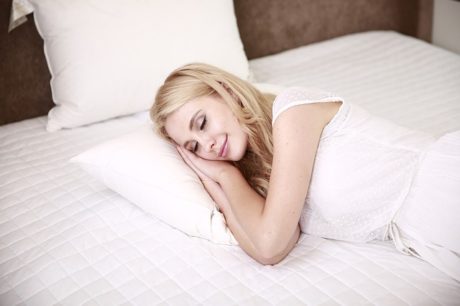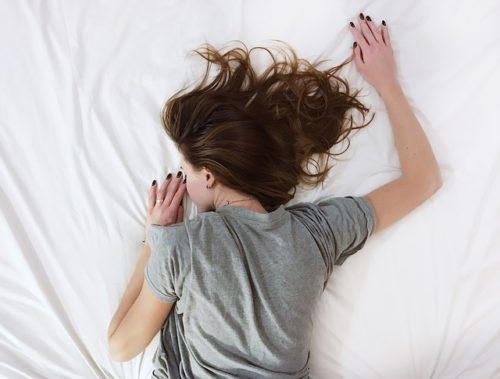When someone is experiencing severe sleep apnea, the very best treatment is using continuous positive airway pressure (CPAP) treatment. If it works well, CPAP can be life-changing. A subtle response may feel like there is a veil being lifted, but people who have a major benefit may feel like a light has been turned on in a dark room. Regrettably, not everyone enjoys the same great response to treatment. One may wonder why?
Discover the reasons why you might not feel better after using CPAP treatment to treat your sleep apnea and how much time it takes to detect recovery.
1. Misdiagnosed With Sleep Apnea
However, it is slightly strange; it is possible that you do not see a benefit to CPAP therapy since you were misdiagnosed with sleep apnea. Additionally, it is possible that the condition has gone away. So maybe you never had sleep apnea, or it has resolved itself due to lifestyle changes. There’s some night-to-night variability in the outcomes of sleep testing.
An in-center escorted diagnostic polysomnogram is the golden criterion for diagnosis. It can support recognizing detailed variations in sleep stages as well as breathing abnormalities, oxygen drops, cardiac anomalies, and even leg movements. Home sleep apnea testing, though feasible, may be less precise. If you examine the diagnosis, or if risk factors such as your weight have changed, consider getting reassessed.
2. Lack of Sleepiness
Immoderate daytime sleepiness due to fragmented sleep is one of the most frequent symptoms associated with untreated sleep apnea. However, not everybody has this symptom. Sleep quality can be significantly reduced because of awakenings linked to abnormal breathing. Mild sleep apnea may be linked with waking up to 15 times per hour to resume breathing! It would hardly be surprising if sleep were unrefreshing, even if you got eight hours of it. Sleepiness can be evaluated with an Epworth score. If you are not sleepy before starting therapy, you may not notice a dramatic difference after using it.
3. You Have Mild Sleep Apnea
Likely, someone with sleep apnea will not notice as much benefit from CPAP therapy. In case you have severe sleep apnea, with over 100 breathing disturbances occurring per hour of sleep, and CPAP therapy suddenly drops the amount below five, you’ll find a dramatic difference. In case you have mild sleep apnea, with just ten events per hour, and the amount is reduced to five, you might not experience as much improvement.
Many people make notice improvement, even with mild sleep apnea, so this should not be a reason to forego treatment. Reflect on the benefits you may be receiving by comparing your current state optimal therapy to your baseline signs, and think whether any improvement with CPAP use confirms the problem.
4. You Aren’t Using CPAP Long Enough Every Night
It can be hard to adjust to CPAP therapy. Waking up in the night may help the removal of this mask. Many individuals take it off towards morning, convincing them that, without it, they could find some “good sleep.” Unfortunately, sleep apnea is worsened in the last hours of the night.
Rapid eye movement (REM) sleep occurs in the last third of the night. This stage of sleep is associated with muscle relaxation and fantasies to avoid dream enactment. The airway’s muscles relax, and this can induce sleep apnea. If you have eliminated your mask before morning, you cannot get a benefit.
You should attempt to maximize use, using the CPAP from the beginning to the end of each night, to assess how much it helps you.

5. You Have Insomnia
Insomnia is a common symptom of sleep apnea. Lots of people report waking up at night for an unexplained reason. It may be recalled every few hours, but it may occur far more than that and becomes especially problematic towards dawn when it could be impossible to return to sleep.
If you get the cause adequately diagnosed and avoid the mistake of sleeping pills, you may find difficulty with the treatment. People with insomnia are more awake at night and during the day, so that sleepiness could be masked. If you already have a problem falling asleep in night, wearing a mask can worsen it by blowing air on your face.
Sleeping pills may aid in comforting the transition, and cognitive behavioral therapy for insomnia (CBTI) can help if insomnia continues.
6. Only Your Bed Partner Hears Your Problem
Though not surprising, some people seek treatment for sleep apnea or snoring solely on account of the impact on their bed partner. Loud and disruptive snoring can affect relationships. It might lead to different sleeping arrangements. It can ruin a vacation or perhaps a camping trip. As mentioned above, some people are not symptomatic in their sleep apnea.
They might have health effects, such as atrial fibrillation or high blood pressure, or a higher risk of diabetes, but they may not contrarily recognize they have difficulty with their sleep. If you start from a state of feeling asymptomatic, it can be difficult to see any improvement with treatment.
Consider symptoms such as snoring, daytime sleepiness, frequent waking, urinating at night, and teeth grinding as possible signs of sleep apnea. Consider symptoms like teeth grinding as signs of sleep apnea, daytime sleepiness, waking to urinate at night, and snoring. You may also notice concentration, mood, and short-term memory challenges from untreated sleep apnea.
7. CPAP Issues Worsen Your Sleep
Unluckily, CPAP can introduce its own set of issues. Without proper interventions and support, these issues can undermine your attempts to acclimate to the treatment. Although initially, it seems uncomfortable to breathe against the pressure, this can be made better with some practice.
Most people who experience difficulties struggle with the fit of the CPAP mask. It can lead to pain, marks on the face, sores or ulcers, and result in air leak if it’s not sized correctly or adjusted. Finding the ideal mask takes just a little advice from the equipment provider.
There are a lot of options: nasal masks, nasal pillows, and full-face masks. Beyond the mask, the temperature and humidity of the air may need to be reduced to promote comfort. Nasal congestion or obstruction can lead to a dry mouth and mouth breathing.
Excessive pressure can lead to air swallowing (aerophagia). These problems may worsen sleep and intensify insomnia. If you get frustrated or upset, sleep becomes even more obscure. Reach out to your suppliers to address your concerns early so that you can get on the right track.

8. You Don’t Have the CPAP Set Properly
It is sad to say, but many individuals don’t obtain the most significant benefit of their treatment as a result of improper settings of the CPAP machine. These configurations are ordered by a physician and can be identified through a titration study in which variations in the pressure level are made while observing your breathing. It could be possible to specify a standard variety of pressure settings and adjust them as you reunite for follow up and the utilization data is assessed.
When the unit is set to default settings ranging from 4 to 20 or 25 centimeters of water pressure, this might be inadequate. If the apnea-hypopnea index (AHI) continues above five events per hour, the pressure setting should be changed. The aim is to find this number as low as possible, and most people will benefit from an optimal environment which leads to an AHI closer to 1 or 2 events per hour.
9. You’ve Developed Complex Sleep Apnea
CPAP treatment can cause a different condition to occur. Most people with sleep apnea have obstructive events, because of the failure of the upper airway (normally the back of the tongue and throat). This might be relieved by a continuous airflow. Unfortunately, some people will start to hold their breath during sleep against the pressure naturally.
Because of this, complex sleep apnea can occur. There’ll be pauses in breathing lasting at least 10 minutes in which no attempt (no motion of the chest or abdomen) exists. If these events occur at least five times per hour, without the persistence of sleep apnea, then the problem is present. Luckily, it resolves in 98 percent of people with continued treatment, often over several months. In rare instances, bilevel therapy may be required to fix it.
10. You’ve Just Started Using It
In some situations, people may expect instant results from CPAP therapy, but this is rarely the case. If sleep apnea is severe with significant symptoms before treatment, a remarkable improvement might occur. When it’s more subtle, it may take longer to see improvement. If you have only used the treatment for a few days, and mainly if you have not been able to use it by night, give it some more time. It may take some weeks before you can see the improvement.
If you do not see a benefit to your treatment, talk to your board-certified sleep physician about methods for that your therapy may be optimized.
Credit: U.S. Dept. of Veterans Affairs
